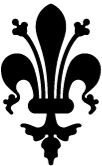Call for Papers & Applications
How can we critically rethink the contested notion of Humanism, a concept integral to Western thought? What is its potential today? And how does it inform, if not transform, our understanding of the human, in a time in which a reconsideration of the relation to the “non-human” is essential? Starting with the ‘human human being’ or the ‘human being human’ (that is “der menschliche Mensch”, Ökonomisch-philosophische Manuskripte, 1844) in Karl Marx’s early writings up to current discourses on neo-, post- and trans-humanism, this workshop is interested in both the reception of Humanism as well as the often contradicting images and concepts of the human created and (still) influenced by its interpretations or formulated in opposition to them.
What we nowadays generally refer to as Humanism – in all its nuances, varieties and ambiguities – is related to two programmatic assumptions: first, the human being distinguishes itself for its capacity (and its longing) for knowledge, doctrina. And, second, that ‘human nature’ goes hand in hand with a specific form of dignity, dignitas. Ever since its first conceptual elaborations in the nineteenth century, be that in art history, philosophy or historiography, scholarship on Humanism has been often imbued with an idealistic and ideologized reading of the sources and the image of the human being postulated therein. Already Jacob Burckhardt famously praised the Italian humanists of the fifteenth century as a “new class of people”, leaving the problematic implications underexposed. Significantly, some of the most influential and controversial contributions were written in the shadow of the darkest chapters of the twentieth century. The spectrum ranged from the interpretation of the humanist epoch – including the heroic image of the New Man – in the service of nationalism and totalitarianism both in the fascist as well as in the communist context to attempts of courageous opposition, but also of resignation in the face of advancing inhumanity.
The questions, ambiguities and expectations brought forward by the humanist epoch, and by its evolution over time, as well as the countless evaluations of Humanism as a figure of thought and a normative set of values are of unbroken topicality: To that end, we aim for a transdisciplinary discussion and seek to offer a differentiated look at Humanism and its reception and/or deconstruction within diverging ideological systems across different geographical areas.
We are particularly interested in, but not limited to, the three following areas:
1) Humanism in the wake of world wars: What is the impact of the experience of (interior) migration and war on readings and/or definitions of Humanism? What is the critical import of these studies today? (Baron, Kristeller, Panofsky, etc.) And how do we deal with the writings of authors who have actively embraced totalitarian ideologies, who have adapted to the ruling system in a questionable way or whose later studies reveal a process of discerning self-questioning? (Gentile, Heidegger, Brinckmann, etc.)
2) Humanism during the Cold War: after the atrocities of the Second World War, and under the still ongoing colonialism, there was a radical rethinking and reimagining of the human and Humanism both in “East” and “West”. How can we reassess this philosophical but also artistic legacy of a critical Humanism under the auspices of an imminent new cold war? (Arendt, Bloch, Fanon, Althusser, Praxis Group, etc.)
3) “Humanism” today: Do contemporary circumstances stimulate a renewed confrontation with Humanism, making earlier texts fruitful for today’s contentions about the possibilities and limits of the human condition? (Haraway, Nussbaum, Said, Margalit, etc.)
We welcome papers from art history, history, history of ideas, literature and philosophy, and related fields that focus on the evolution of specific concepts or terminologies of Humanism as well as analyses of images or imaginaries of the human. Scholars are also invited to present single case studies or translations of sources in their specific socio-political background that might shed light on underexplored material.
Papers should not exceed 20 minutes and will be followed by a discussion.
Please send title, abstract (max. 2000 characters) and a short bio summarised in one PDF-document to katharine.stahlbuhk@khi.fi.it by 2 September 2024.
The 4A_Laboratory: Art Histories, Archaeologies, Anthropologies, Aesthetics is a research and fellowship program of the Kunsthistorisches Institut in Florenz – Max Planck Institute in cooperation with the Stiftung Preußischer Kulturbesitz (Prussian Cultural Heritage Foundation). The program takes active part in the transcultural debate about the future of art history while engaging in a transdisciplinary dialogue between institutions and disciplines as well as the responsibilities of museums and collections. From November 4-8, 2024 the 4A_Lab hosts the thematic Academy “Ecological Entanglements across Collections – Plant Lives and Beyond”, focusing on the program’s theme Aesthetics, Art and the Ecology of Plants.
Read more about the Academy in Berlin here.
In occasion of the Academy (from November 4-8, 2024), the KHI offers support for up to 3 early career researchers (pre-doc), to allow in person participation in Berlin. The KHI will cover travel costs and accommodation up to 1.400,00 € in total for each of the invited participants, depending on the place of residence. Researchers based in Central and South America, Africa, and Asia are particularly encouraged to apply.
The application should include a cover letter explaining the reasons for applying (including expectations, career benefits, and corresponding research interests, PhD Project) and a short CV (max. one page).
Please send your application as one document (max. 2 MB) in PDF format by 11 August 2024 to 4a_lab@khi.fi.it.
***
4A_Lab: Art Histories, Archaeologies, Anthropologies, Aesthetics
Kunsthistorisches Institut in Florenz – Max-Planck-Institut
Via Giuseppe Giusti 44
50121 Firenze, Italia
+39 055 24911-1
info@khi.fi.it
www.khi.fi.it/4A-Lab


